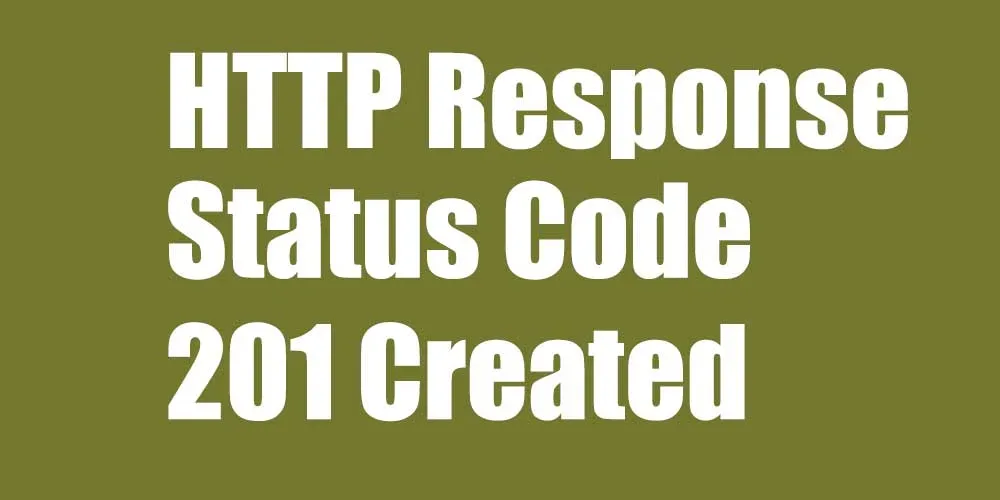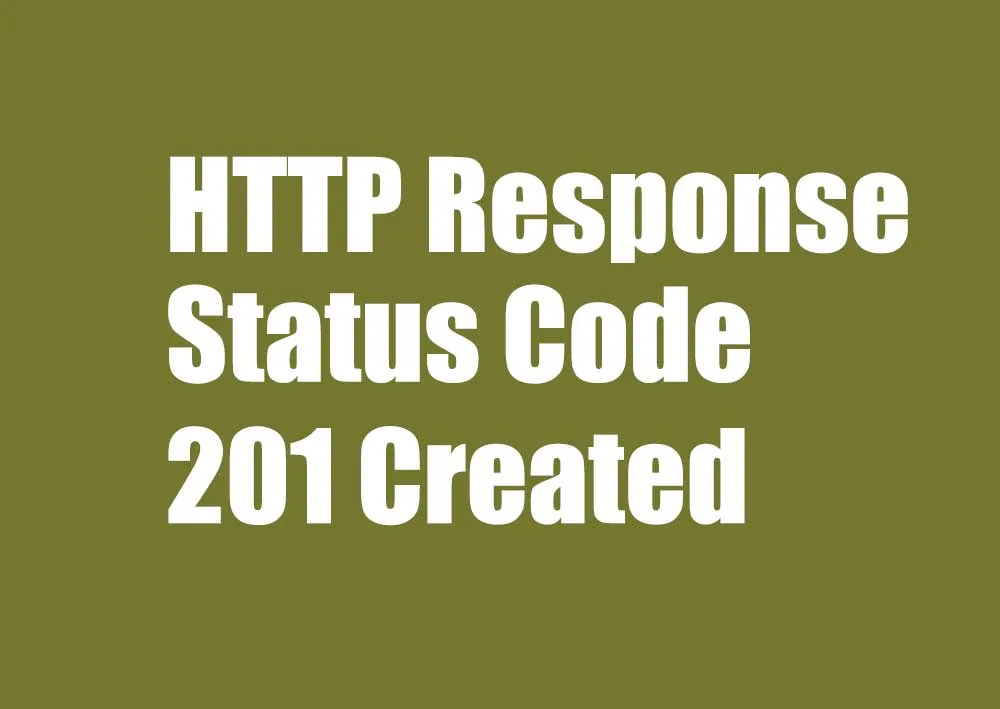Introduction to the 201 code:
If you’re a web developer, you’re likely familiar with HTTP response status codes. These codes are an important part of the HTTP protocol and provide information about the status of a web request. One of the most important response codes is the HTTP response status code 201 Created. In this article, we’ll take a deep dive into this code and explore what it means, when it’s used, and why it’s important.
What is the HTTP Response Status Code 201 Created?
The HTTP response status code 201 Created is used to indicate that a request has been successful and a new resource has been created. This code is typically used in response to POST requests, which are used to submit data to a server for processing. When a server receives a POST request and successfully creates a new resource, it will respond with a 201 Created status code.
Why is the HTTP Response Status Code 201 Created Important?
The HTTP response status code 201 Created is an important code for web developers to be familiar with. This code indicates that a new resource has been successfully created, which can be a critical piece of information for applications that rely on the creation of new resources. Additionally, this code is part of the HTTP protocol, which is the foundation of the web. Understanding HTTP status codes is an important part of web development.
How is the HTTP Response Status Code 201 Created Used?
The HTTP response status code 201 Created is typically used in response to POST requests. For example, if you’re building a web application that allows users to submit new blog posts, you might use a POST request to submit the new post data to the server. If the server successfully creates the new post, it will respond with a 201 Created status code. This lets the client know that the post has been created and provides a location header with the URL of the newly created resource.
Examples of HTTP Response Status Code 201 Created in Action
To better understand how the HTTP response status code 201 Created is used, let’s take a look at some examples:
-
Creating a New User Account
When a user signs up for a new account on a web application, the user’s information is typically submitted via a POST request. If the server successfully creates the new user account, it will respond with a 201 Created status code.
-
Submitting a New Order
When a user submits a new order on an e-commerce website, the order data is typically sent to the server via a POST request. If the server successfully creates the new order, it will respond with a 201 Created status code.
Examples of Status Code 201 Created in Action!
Creating a New User Account
Request:
POST /api/users HTTP/1.1
Host: example.com
Content-Type: application/json
{
“name”: “SEO Joe”,
“email”: “seo.joe@example.com”,
“password”: “password123”
}
Response:
HTTP/1.1 201 Created
Location: /api/users/123
Content-Type: application/json
{
“id”: 123,
“name”: “SEO Joe”,
“email”: “seo.joe@example.com”
}
Submitting an Order
Request:
POST /api/orders HTTP/1.1
Host: example.com
Content-Type: application/json
{
“customer_name”: “SEO Joe”,
“customer_email”: “seo.joe@example.com”,
“product_id”: 123,
“quantity”: 2
}
Response:
HTTP/1.1 201 Created
Location: /api/orders/789
Content-Type: application/json
{
“id”: 789,
“customer_name”: “SEO Joe”,
“customer_email”: “seo.joe@example.com”,
“product_id”: 123,
“quantity”: 2,
“status”: “pending”
}
HTTP Status Code 201 Created FAQ
There are many HTTP response status codes, but some of the most important include 200 OK (which indicates a successful request), 404 Not Found (which indicates that the requested resource could not be found), and 500 Internal Server Error (which indicates that there was an error on the server).!
Yes, it is possible for a POST request to receive a different response code. For example, if there is a validation error with the submitted data, the server may respond with a 422 Unprocessable Entity status code.
Yes, it’s recommended to include a location header in the response to a POST request that results in a 201 Created status code. The location header should contain the URL of the newly created resource. This allows the client to easily access the newly created resource and can help avoid potential errors or confusion. However, the location header is not strictly required by the HTTP specification, and some APIs may choose not to include it.
Conclusion
The 201 status code is used to indicate that a new resource has been successfully created in response to a POST request. As a web developer, understanding the meaning and importance of the HTTP response status code 201 Created is essential for building robust and reliable web applications. By using this code appropriately and handling it correctly in your applications, you can ensure a positive user experience and improve the overall performance of your web projects. So, be sure to keep the HTTP response status code 201 Created in mind as you continue to develop and refine your web development skills.


